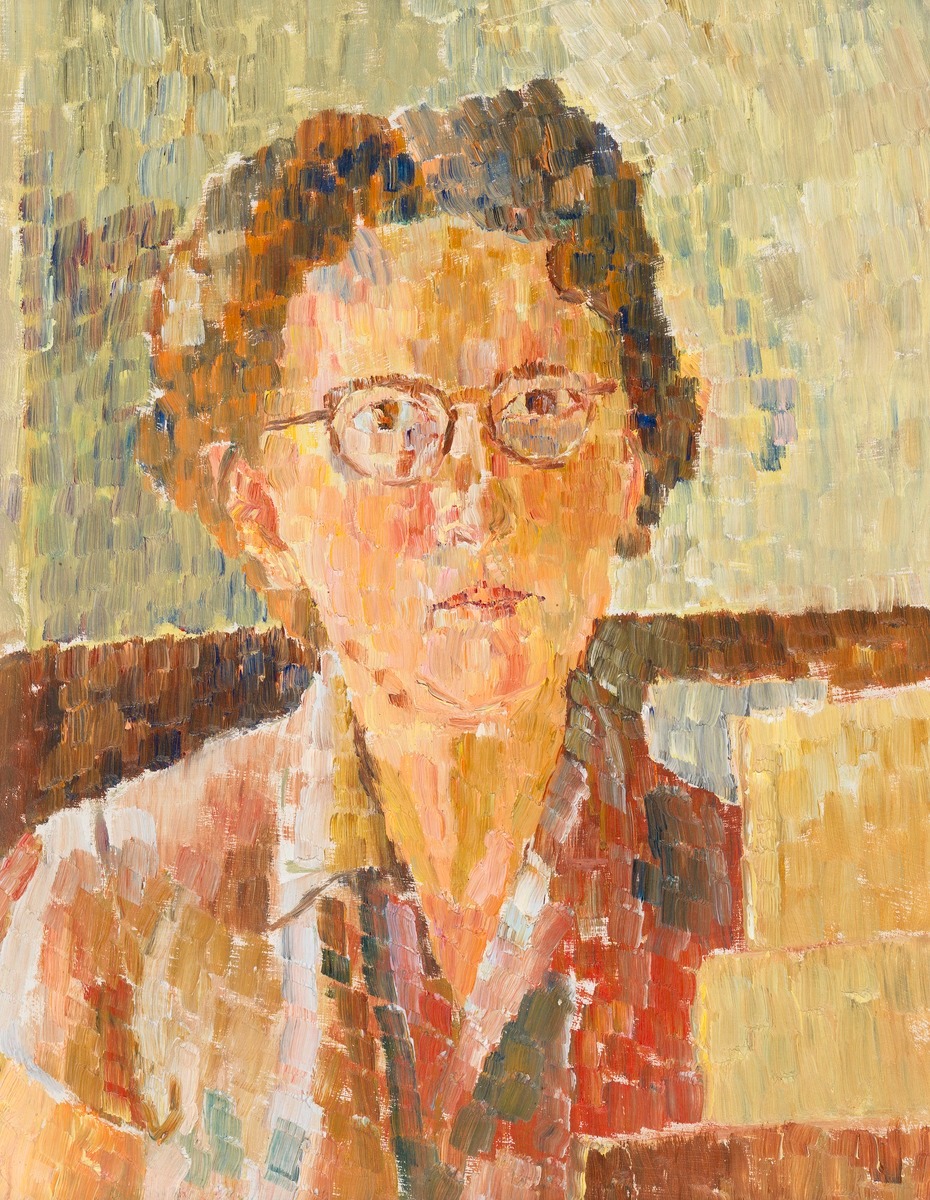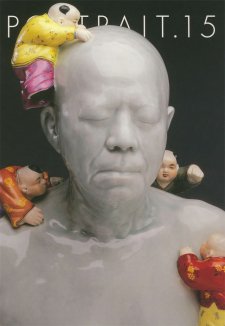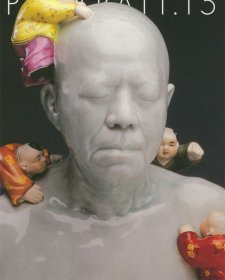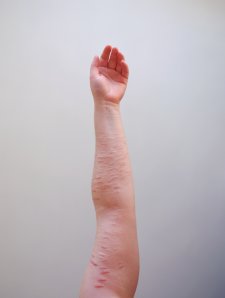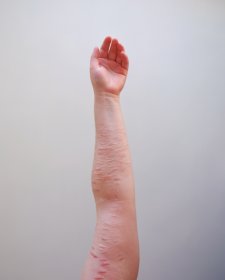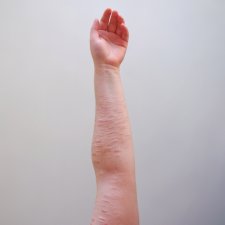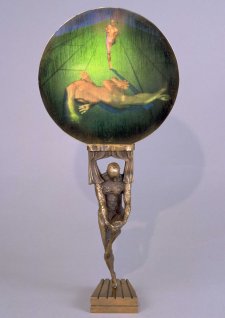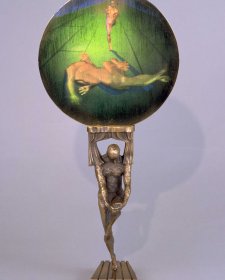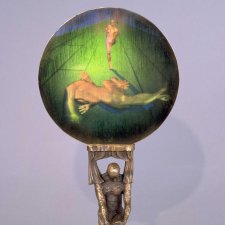The Australian art world of the 1920s was dominated by men but three women committed to work in modern styles made a major impact on the art of the decade. Close contemporaries, Thea Proctor, Margaret Preston and Grace Cossington Smith were frequently sources of inspiration and irritation to each other. Their artistic styles, ideologies and use of medium varied widely, but each is considered today to have had a definitive impact on the Australian art scene.
Since its inception, the National Portrait Gallery has enjoyed close working relations other cultural institutions around Australia and overseas. Joint initiatives such as the Summer of Silver exhibitions displayed recently at the National Portrait Gallery (Commonwealth Place), the National Gallery of Australia, the National Library of Australia and the National Archives promote the diversity of the four major cultural collections as well as allowing audiences a deeper understanding and appreciation of a particular medium, artist or artistic style.
To coincide with the upcoming exhibition The world of Thea Proctor at the National Portrait Gallery (8 April - 19 June), the National Portrait Gallery is proud to be lending one of its key works to the National Gallery of Australia for their retrospective on another leading Australian Modernist, Grace Cossington Smith (Grace Cossington Smith; a retrospective exhibition 4 March - 13 June).
Cossington Smith's Self Portrait, 1948, was purchased by the National Portrait Gallery in 2002.
It depicts the artist in the prime of her long career. The short brushstrokes, laden with paint, build up a strong colour portrait of the middle-aged artist, who stares determinedly out at the viewer. Though depicting herself as rather bookish in appearance, Cossington Smith has captured the dedication she felt towards her art in her intense focussed gaze and determined set of her lips.
By 1926 another female Modernist, Thea Proctor, had established her reputation in the field and she founded the Contemporary Group with George Lambert. Other 'less orthodox painters' were invited to exhibit with them at Grosvenor Galleries, including Cossington Smith. Proctor and the younger Cossington Smith became close friends and often sought advice from each other on the particular artwork they were creating at the time. Occasionally their art referenced each other, as was the case in Cossington Smith's painting The Lacquer Room, 1935-36 which depicts the cafe that may have been designed by Thea Proctor and certainly reflected her tastes in interior decoration. Although Proctor was not an oil painter, she appreciated Cossington Smith's use of colour and her ability to capture a freshness and vitality in her work. A mutual friend, Enid Cambridge sung the pair's praises, stating; 'Indeed, in Europe I often found it very hard to find anything as beautifully felt as the drawing of Thea Proctor, and the colour of Grace Cossington Smith.'
Another exhibition on display at the National Gallery of Australia this month features the work of a third contemporary modernist, Margaret Preston. The exhibition, Margaret Preston, Australian printmaker (18 December - 25 April) presents a comprehensive display of the Preston's printed work from 1916-1956, as well as personal items selected from the Gallery's Research Archive. Preston was only four years older than Thea Proctor and in a rather flamboyant manner the pair had a wonderfully creative and combustrve friendship. In the early 1920s both artists were working in a similar vein producing decorative prints with modernist lines and carefully structured compositions and highly developed colour combinations. In 1924 they were both included in a combined feature on 'The Gentle Art of Arranging Flowers' to the Home magazine and the following year their close working relationship was culminated in two pint exhibitions, in Sydney and Melbourne. It was Preston who introduced Proctor to the technique of making woodblock prints. Both artists owned and displayed examples of each other's work in their homes and were clearly interested and stimulated by their varied working techniques and Modernist ideals. However, a much-celebrated falling out between the two artists, prompted by professional jealousy and increasingly disparate ideologies, led to a significant cooling of their friendship.
Proctor, Preston and Cossington Smith were all working within the Modernist tradition in very different ways. Despite the dissimilarity in look and feel between the three, there is one significant similarity - their works are all firmly based in the interior. Cossington Smith is perhaps most famous for capturing in glorious colour the light filled, sunbathed interiors of her home at Turramurra. Following the death of her father in 1938, she moved from her garden studio to one inside the house, and began painting a series of intimate views of her surroundings offering glimpses in mirrors and through ajar doors and uncurtained windows.
Thea Proctor was deeply interested in costume, theatre and design and created a great number of fan designs portraying idyllic scenes of the leisure activities. Described at her death as a 'taste-maker'. Proctor's eye for decorative style permeated her whole existence. Her vision for interior spaces were given their most complete expression in the room she designed for Burdekin House in 1929, with custom designed furniture, and integrated home decoration consisting of Modernist prints and delicate watercolours.
Whilst Margaret Preston's magnificent wood and lino prints of Australian flora and landscapes were often not actually depicting an interior, their stylised Modernist appearance ensured the works took on a consciously decorative purpose. The post-war economy in Australia in which Preston was working favoured inexpensive and accessible home decoration. In fact, it was partty because these three women were working substantially in a decorative Modernist format, rather than challenging the male-dominated media of grand large-scale paintings, that their influence is so keenly felt today.
The exhibitions on display at the National Portrait Gallery and the National Gallery of Australia present a unique opportunity to explore the art, the lives, the society and the friendships which surround and entwine these three modern Australian women.
